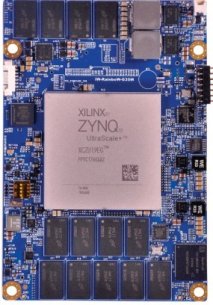- Products
- Automotive
- Avionics
COTS Module
- Agilex 7 SmartNIC Card
- Zynq RFSoC ADC DAC PCIe Card
- ZU7/ZU5/ZU4 PCIe SmartNIC Card
- ZU19/17/11 PCIe SmartNIC Card
- PCIe Switch Module
- PCIe to SD 3.0 M.2 Module
- Kintex-7 PCIe Card
- Zynq ZU7/ZU5/ZU4 3U-VPX
- Virtex UltraScale+ 3U VPX
- Kintex UltraScale+ 3U VPX
- Zynq ZU19/17/11 3U VPX
- Kintex-7 3U VPX Card
- VITA 57.4 FMC+ Loopback Test Module
- VITA 57.1 FMC Loopback Test Module
- PCIe Gen4 x8 FMC Module
- PCIe Gen4 x16 FMC+ Module
- PCIe Gen3 x8 FMC Module
- Quad QSFP28 FMC+ Module
- FMC Add-On Cards
- IP Cores
- ODM Solutions
- Custom Design
- Company


Get a Quote
Please fill in the form and we will get back to you soon!
We appreciate you contacting iWave.
Our representative will get in touch with you soon!

Get in Touch
We appreciate you contacting iWave.
Our representative will get in touch with you soon!
Thank you for subscribing to our newsletter!
ZU19EG System on Module for Driving Simulator
Simulators for driving research and development are common today for many reasons. They are used to provide
- Real-life driving environment and configurations to train both novice and experienced drivers
- Conduct initial tests on a virtual prototype before a new car is designed, to save time and money
The visualization system in simulators is essential to provide a seamless, immersive visual experience in simulator applications. These display systems range from simple direct-view displays optimized for basic training to a wide-angle, full-field 300o view dome display that immerses a trainee in a simulated environment. Thus, the frame rate is as important as the projector’s color, brightness, and resolution.
A global provider of simulation projection solutions approached iWave, for a high-performance FPGA-embedded platform for real-time processing of multichannel projection devices that delivers a perfect replica of reality.
Key challenges
- Ability to connect multiple displays together
- Support high resolution & frame rate
- Reliable codec mechanism to optimize end-to-end latency
- Implement on logic circuit
Solution highlights
iWave proposed a ZU19 Zynq UltraScale+ MPSoC, a high-end System on Module (SoM) with an ARM + FPGA architecture for real-time video/signal processing applications. The SoM implements video encoding, decoding, overlay, and scaling on a single Arm+FPGA platform, which improves system integration.
The ZU19EG Zynq UltraScale+ MPSoC System on Module offers multiprocessing engines to optimize functions across the entire application and programmable hardware to provide further performance boost and safety. Combining rich peripheral devices available on the module with segment-specific IP cores, ZU19 SoM offers the designer with a starting point for creating differentiated content.
The embedded processors control the data flow and various commands from the user interface and communicate with the rest of the FPGA functions via the AXI system bus. Onboard memory and storage blocks such as DDR4 RAM and eMMC flash are used as image buffers, FIFO buffers, and data/code storage for embedded processors.
The Zynq UltraScale+ MPSoC supports HDMI, DVI, and DP display connectors to connect multiple displays. Furthermore, the SoM enables the addition of more display interfaces via programmable logic (PL), increasing platform efficiency and reliability.
With support for both wired and wireless communication, such as Dual Gigabit Ethernet, 802.11 ac Wi-Fi, and USB 3.0, the SoM supports 4G/5G wireless for transmitting and receiving compressed video streams with utmost ease and efficiency. JPEG-encoded image data is converted to separate red, green, and blue pixel data required by the projection optics. To improve image quality, pixel processors and other custom algorithms were used.
The SoM provides up to 142 user-configurable IOs to control external functions responsible for power management, user interface, and configuration control. The USB interface provides external USB 2.0/3.0 Phy connections. 1968 DSP Slices available in the SoM offer advanced DSP capabilities to implement several image processing algorithms, including color space conversions and JPEG encoding/decoding, as well as more general-purpose algorithms like FFTs and filters.
FPGAs bring several distinct advantages to a designer. Since image processing algorithms can evolve based on customer feedback or new research, these FPGAs adapt to changing interface requirements to improve existing features.
Hence, all external components, interfaces, drivers, and operating systems required by the application are available on board for rapid development. The development kit further enhances the time-to-market advantage over ASIC-based design.
For more information, please contact mktg@iwavesystems.com.
iWave is an embedded systems engineering and solutions company, designing solutions for the Industrial, Medical, Automotive and Avionics vertical markets, and building on our core competency of embedded expertise since 1999. Read More…
Newsletter
Copyright © 2022 iWave Systems Technologies Pvt. Ltd.






